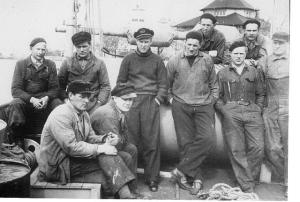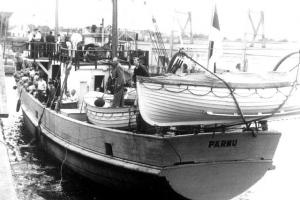Take December 6, 1917 during World War I when two ships were in Halifax’s inner harbour. The Imo, a Norwegian ship, was behind schedule and in a hurry to leave. The Mont-Blanc, a French munitions ship, had arrived from New York the day before but was held back having arrived too late to pass through the submarine nets. Allowed through the next morning, the Mont Blanc was not flying the mandated red flag to identify it was carrying highly combustible materials: 200 tons of TNT, and 2,300 tons of Picric Acid.
In those days ships in the inner harbour were known to sometimes pass each other on the wrong side. Of course had the Imo known what deadly cargo the Mont Blanc was carrying it is unlikely it would have pressed to pass the Mont Blanc on the wrong side even though the Mont Blanc had signalled back that it was not changing course. There was a collision and an uncontainable fire broke out on the Mont Blanc. Panicked, the Mont Blanc captain and crew abandoned ship in a rowboat to a nearby island leaving the vessel to drift. As the burning ship slowly crept toward the downtown area a crowd gathered at the harbourfront enjoying the unusual spectacle.
Just after 9:00 a.m. a volcanic explosion sent more than a kilometre-high blast of firebombs skyward. The black rain of carbon and jetsam fell heavily on the city setting it afire, killing 2,000 people and wounding thousands in a city of 50,000. The explosion was heard 100 kilometres away and fragments of the ship landed 5 kilometres away. The old terminal Pier 2 was damaged by the explosion and was subsequently rebuilt. A second fire destroyed it. Rebuilt in 1928 and renamed Pier 21 the terminal’s busiest volume of sea traffic took place right after World War II. Since 1939 the Department of National Defence had managed Pier 21.
After Sweden had accepted 22,000 Baltic refugees from 1944 to 1946 it was being coerced to return them to their occupied countries. Estonians, Latvians and Lithuanians sought escape on small ships such as the Walnut, Sarabande, Pärnu, Amanda, Gladstone and Samaria arriving in Halifax without proper entry papers. 500,000 immigrants and 1000,000 refugees passed through Pier 21 in the years immediately following the war.
The Walnut and Sarabande were reconverted trawlers and basically unseaworthy immigrant ships. The minesweeper Pärnu, built in 1942, 115 ft. in length and 23 ft. in breadth was constructed of wood, also refurbished and unseaworthy.
My personal interest lies with the Pärnu as it was one of the ‘little boats’ my uncle Captain Jakob Suksdorf navigated from Malmö to Pier 21, arriving with the Estonian flag flying on August 2, 1949. On board were 154 people, including Capt. Suksdorf's wife Laine and two daughters as well as many Estonian Vancouverites including the Kembi family. Jakob Kembi was a part owner of the Pärnu ship. (If anyone has any journals, photos or memorabilia relating to the journey please send it to: ev@estonianevents.com)
Canadian Immigration closed down Pier 21 in 1971. In 1988 the Pier 21 Society was born and on Canada Day 1999, Pier 21 became a National Historic Site Museum.
My cousin’s son Sean Flinn is a journalist who lives in Halifax and is well known to Pier 21 as an enthusiast of the Pärnu crossing. Sean chronicles interesting stories on his website in commemoration of his grandfather and to celebrate the 60th anniversary of the Pärnu’s arrival August 2nd, 1949. Drum roll please... may I present www.halfestonian.com
Advertisement / Reklaam
Advertisement / Reklaam




















